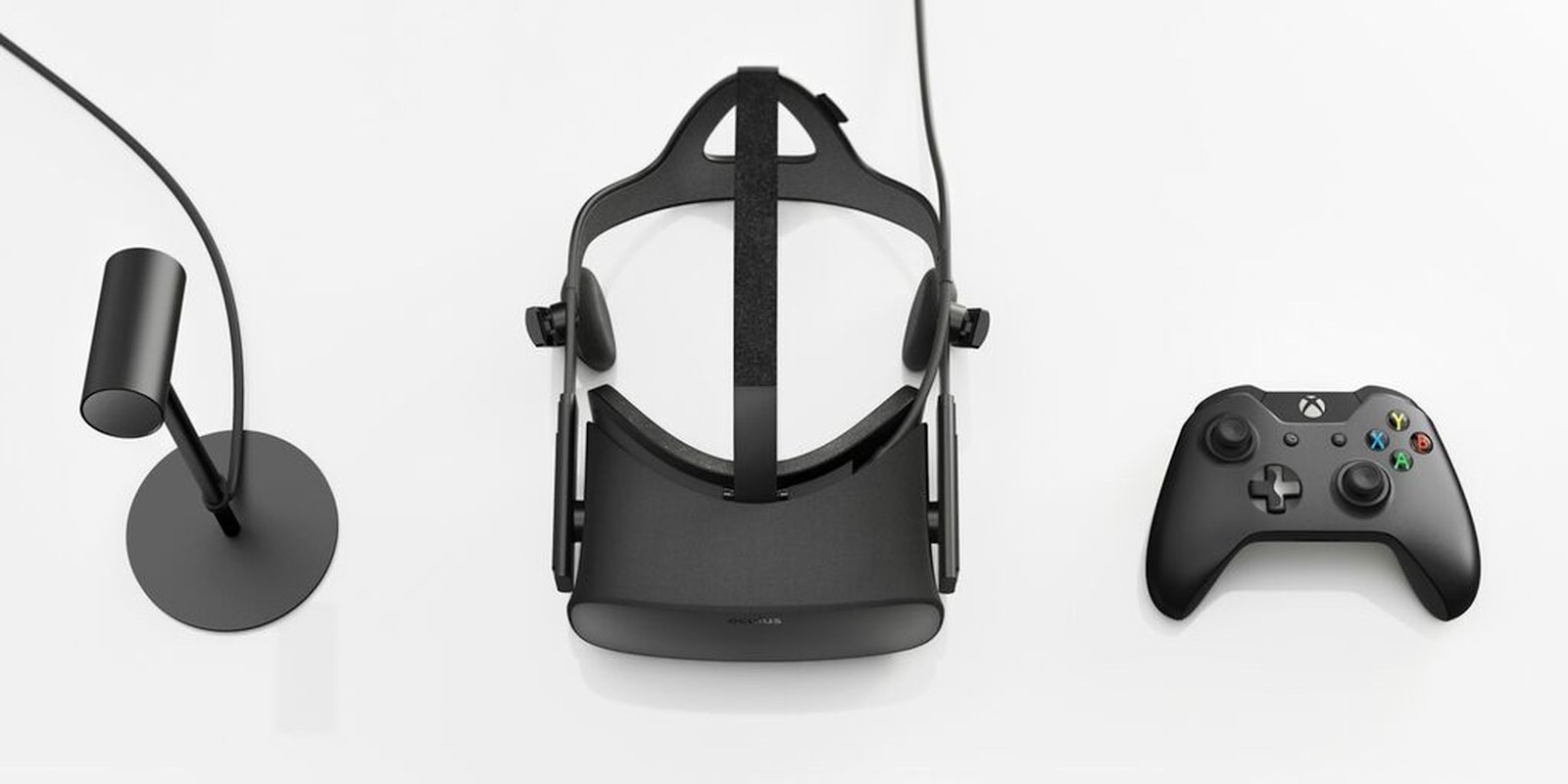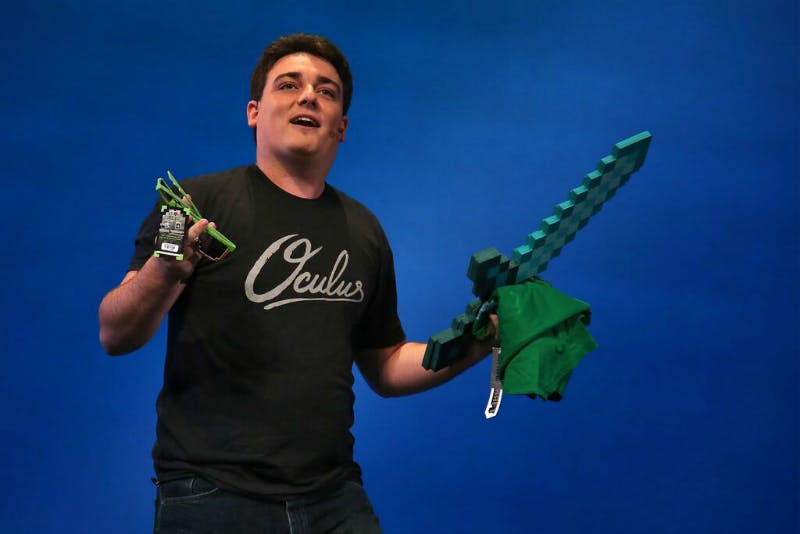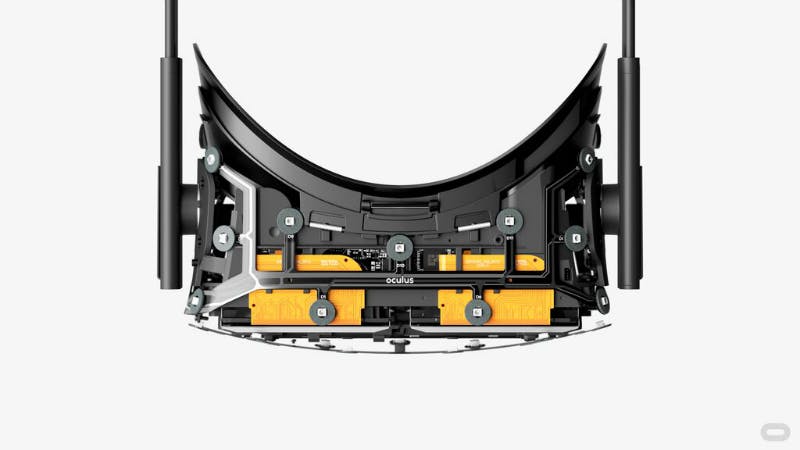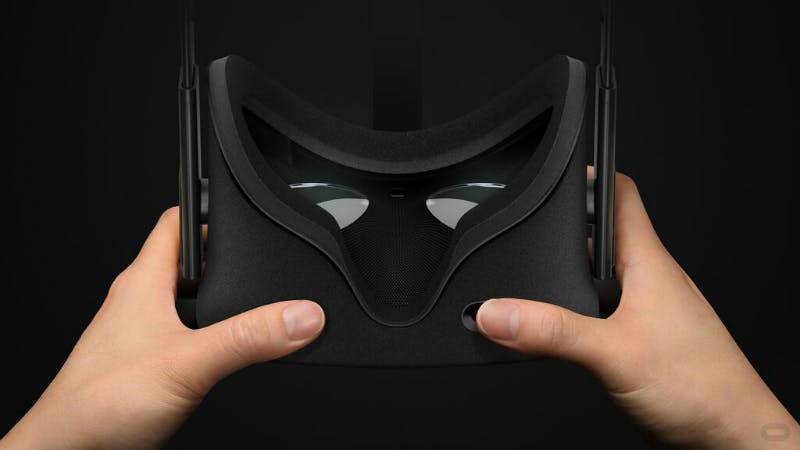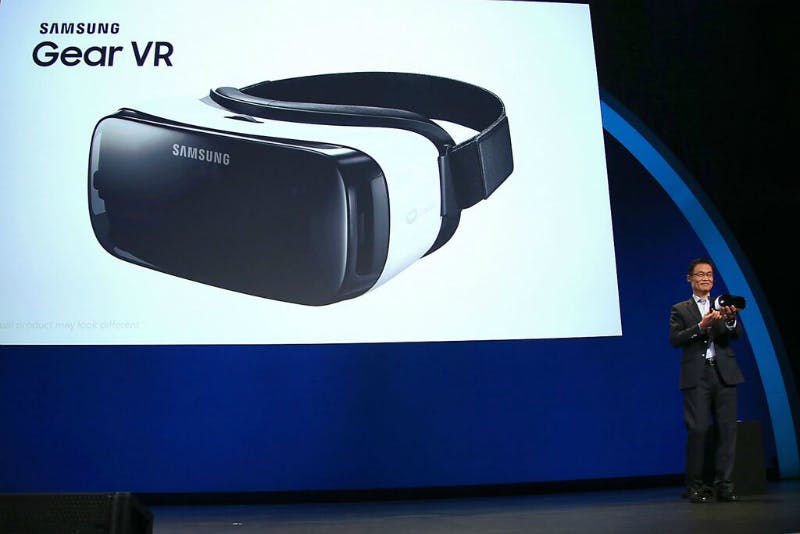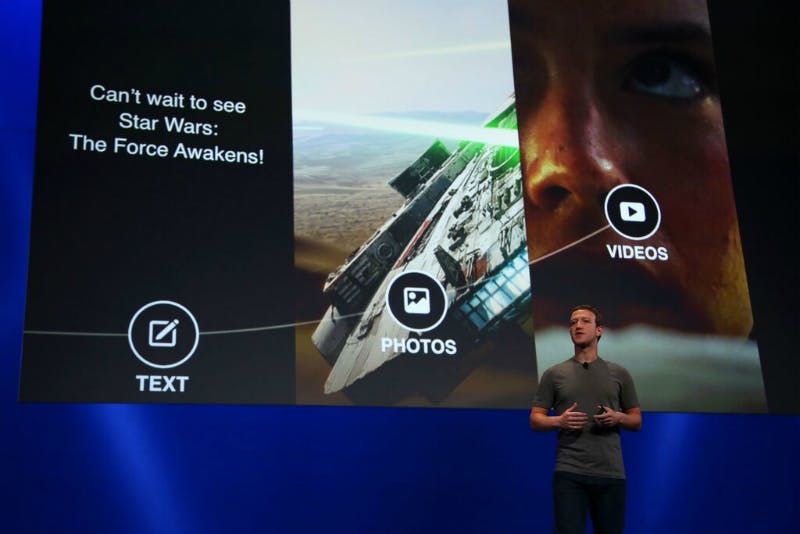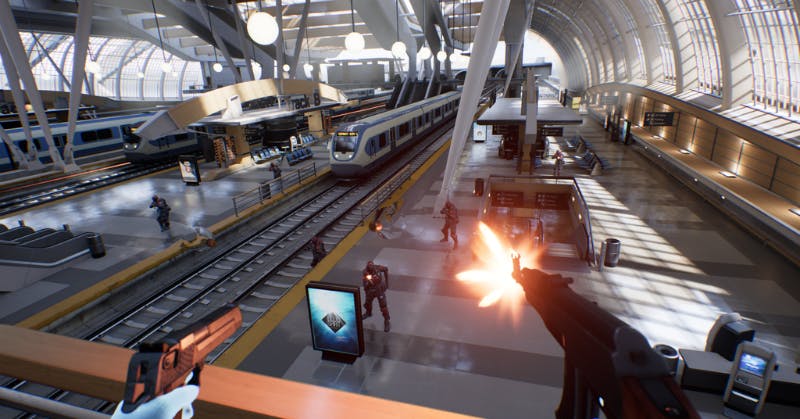You’d think the man who invented modern virtual reality with the Oculus Rift would be nervous several months before his creation goes on sale for the first time. Palmer Luckey isn’t worried.
That’s not to say he doesn’t want the Rift to be successful. But the 23-year-old is as concerned about the future of virtual reality, writ large, as he is with the success of his own product, or so it seemed when I spoke with him on at the Oculus Connect 2 developers conference in Hollywood, California.
VR has mostly been the province of gamers and tech fetishists since an early prototype of the Rift debuted at E3 in 2012. But there’s a growing interest (spurred in part by Luckey’s heavily parodied photo on the cover of Time), and more people than ever will be paying close attention when Rift is released to consumers in early 2016.
Several hours before our interview, Luckey revealed that Minecraft will be coming to Rift in his keynote address in the TCL Chinese Theater. Bringing one of the most engrossing and influential video games of all time to the Rift is a big deal, and Luckey may have been riding that wave as we discussed his confidence in virtual reality’s healthy future, with or without the Oculus Rift.
What does Palmer Luckey do nowadays? What’s your day look like?
It depends on what’s going on. Some weeks I’m entirely focused on working with developers to help make their games better, giving feedback, helping teach them what we’ve learned in VR, whether it’s how to do things well, or what mistakes that we’ve made.
Sometimes it’s all about hardware. For a long time, there was a push to make [Oculus] Touch really good, and making virtual reality motion controllers is really difficult, especially because we weren’t going for just making wands or tools for VR. We wanted to actually make it feel like your hands are inside the game.
And getting there is hard. You’ll change one thing, and you’re like, “Oh, no, now we don’t got it. Now we have to re-engineer this whole design.” So I’d say sometimes hardware, sometimes working with developers, sometimes just pure public relations stuff, like talking to you right now. There is no typical day. It really varies, by day or week.
What’s your favorite thing, of all those things to do?
I was going to say hardware, but I like working on the product. The thing we’re making, is it just hardware, or software? It’s kind of this weird fusion of both where they work really, really intimately together. Our entire tracking system is actually more complicated on the software side than the hardware side. But I guess working on those complex systems is what I really like to be doing.
To put it another way, I wish I was not here with you. I wish I was back at the lab.
[laughs]
To be perfectly honest, it’s important to do these things, and I really like getting the word out there, and that’s why it’s exciting for me to talk to people, but the thing I most want to do is to be in the lab working, working on making this stuff good.
You want to play.
Not even…maybe you’ve had this problem. There are times especially when I was just getting into PC gaming where I spent way less time playing than obsessing about the quality of the play. “Oh, the anti-aliasing, it’s all wrong, I need to roll back my driver, and now I need, oh, I found this patch. Oh, this looks great!”
Yeah.
I’d say that’s actually kind of what it’s like to be at Oculus sometimes. Where I like playing, but a lot of times it’s more like, “Oh, we can fix this! Oh, man, this is really showing off a bug we have in our tracking. OK, I gotta take some notes on this.” And you just, you obsess over it, and sometimes you’re able to just forget it all and have fun.
But isn’t that still kind of play, though? I mean, you love doing this, right? So even if it’s fixing problems…
It’s its own type of game.
How do you measure successes, in this Oculus metagame we’re talking about where you’re working on the software, you’re working on the hardware, what does a success in that game look like?
It’s hard to define success right now, because we haven’t shipped a consumer product. We’ve shipped development kits, we’ve helped Samsung ship the Gear VR Innovator Edition, but real success is going to be shipping a product and putting a stake in the ground and saying, “This is virtual reality, this is something we believe is good enough to ship to all of you guys,” and the real success will be when people say to us, “Yes—yes it is. It was ready to ship to everybody.”
How much longer do you have to actually work on the design and iterate on the Rift? Like, what’s your drop dead, we have to stop now?
It never stops. When you’re working with a manufacturing facility, you have to make multiple tweaks during the manufacturing process. You have people in the factory watching these units in every batch and being like “That last batch has a problem. We need to tweak things right now.” And we end up with these very minor variations.
We’ve already passed the date where, we know roughly when we’re shipping. Everything’s locked.
Like, there’s actually several small revisions to DK2 that were made over the manufacturing lifetime. So I guess there’s no real drop-dead date, but in terms of big changes, we’ve already reached that drop-dead date. Like, what you’re trying here at the show, it’s largely representative of what’s going to ship.
But eventually you have say, “All right, we need to stop tinkering, because we got to mass-produce X number of these units to ship.”
Sure.
What’s that date?
It’s already happened. We’ve already passed the date where, we know roughly when we’re shipping. Everything’s locked. We’re on schedule to ship what we’ve been promising.
I can’t tell you what that exact date is, but I can tell you we’ve already passed it. What we’re shipping, in terms of the Rift, and also in terms of Gear [VR], you know, which we were showing on stage today, it’s ready to go.
How many different iterations of the Rift hardware do you have being shown today, between different demos?
We have Crescent Bay being shown on a few things, mostly because they were built in the Crescent Bay tech stack and porting it over to the Rift tech stack. It’s not hard, but at the same time there’s all kinds of small changes that need to be made. We try to prioritize actual product work over “cool-demos-to-show-at-trade-shows” work.
So we’ve got Crescent Bay, we’ve got the Rift in several, very minor iterations, and we’re showing off a few different versions of Gear VR.
Is it a challenge to give attendees a sense of what the Rift is going to be like, when you have different versions of the hardware, in different iterations, with their own quirks and eccentricities?
A little bit? But most of the units that people are trying are the final Rift. We’re showing a few Crescent Bays, but I think the majority of what people are using is the final thing. Everyone is getting to try demos that use the Rift. It’s just different demos have different things.
Is it going to be more difficult to, in five years from now, be selling VR not from the perspective of it’s this amazing, wonderful thing because we’ll have had it for five years, and trying to sell the practical benefits of VR.
I don’t know if it’ll get harder. I think it’ll be—it’ll probably be harder for individual things to stand out without actually really innovating in other areas.
Things are going to have to stand out on their own merit, not on the merit of the platform they happen to be made for.
Remember when the iPhone app store came out, and there were only a few reasonably good games in the store, it’s like “Well, tell me about your game.” “Well, it’s a game, and it’s on your iPhone!” And it’s like “Oh my God, it’s amazing!”
If you look at those games, they’re pretty bad compared to the mobile games you can get today. These days you can’t just show up with a mobile game and be like, “It’s a game on your mobile phone.” It’s like “But tell me, what else can it do? Why do I actually want to play this?”
The same thing’s going to happen in virtual reality. Things are going to have to stand out on their own merit, not on the merit of the platform they happen to be made for.
A common theme running throughout this conference is that developers need to understand that in order for VR software to be good, it needs to be developed for VR, from the ground up.
Right.
Have enough people gotten that message yet, to be able to provide for a healthy suite of launch software for the Rift?
I mean, we have a really healthy launch suite. Some of it’s been announced, most of it hasn’t, so, yeah, people definitely get it. That message has really been hammered home, and the good thing is, there’s no dissenters.
Sometimes there’s different schools of thought in terms of how you do this. There are some people who are like, “Well, I think that VR applications can be made for VR and PC,” and I agree with them, actually, but you still have to keep VR in mind from the beginning.
Unless you happen to be something like a simulator app. People point to simulation apps like racing games, and they’re like, “But look, it’s a racing game and it works perfect in VR. Isn’t that proof that you can just port games over to VR?”
Yes, it is a port, but this game was built specifically to replicate reality as perfectly as possible. It’s not really a surprise that a game built around replicating reality also transfers into virtual reality reasonably well. If you’re making the car models at the right size, the tracks at the right size, people at the right size, you’re moving just as a real car would.
So I’d say simulators don’t disprove the idea that when you build a game, you have to have VR in mind from the ground up. They’re kind of an exception to that rule, because of the nature of the game.
Medical and architectural applications for virtual reality are pretty obvious advantages. But how about, you know, mom and pop using Facebook, watching their videos and their pictures. What can VR on Facebook give them that they can’t get?
The Facebook social network is not necessarily the thing that’s going to bring virtual reality to mom and pop. I mean, being able to browse your news feed in VR, even if it’s cool, isn’t the thing that’s going to make your mom and pop say, “Oh, I need to buy a VR headset!”
It’s going to be the things they can’t do with their normal computer. When we’re able to take Skype to the next level, so that for example rather than just showing a video chat window, when you can actually capture a live environment and have somebody be virtually present there.
I actually know somebody and he, I’ll disclose, he works at Oculus, so he’s not a normal person. But he actually had some of his friends capture his wedding in virtual reality, using a virtual reality camera rig, and so they actually set it in a chair like next to the aisle, and they captured the wedding,
They captured the party afterwards, and they cut it together into this 20-minute thing, and so they were able to just use Gear VR to show that to relatives that weren’t able to make it. Or they were in nursing homes and literally couldn’t make it, no matter what the scheduling was. And those people were blown away. Like, “Oh my God, it’s like I’m actually there,” And for them, that’s huge, to be able to bring something to them that they couldn’t have done otherwise.
So family moment, not as photograph, but family moment as virtual reality simulation that you could step into.
Bingo. And that’s going to expand over time, right? Have you ever looked back at color videos of things that are right around when videos first started, and you’re like, “They had video back then?” Sometimes you look at old black-and-white photos, and you’re like “God I can’t believe this is the only record we have of that time,” these little, staged—they were super expensive—timed, black and white photos.
People are going to start sharing family moments or sporting events—really anything that you capture as video today—as these VR scenes.
I think in the future, our kids or grand kids are going to think a similar thing about virtual reality. We’ll have devices that are able to capture entire scenes, not just as 360 video, but actual with perfect 3D sound, from all angles, and in perfect 3D depth for everything, with perfect fidelity.
People will be able to replay these scenes in VR and feel like they were actually there, and then like, “Man, can you believe the 2000s? The best thing they had was this little, narrow 40-degree field of view video capture, and it was just flat and 2D.”
That’s a thing that’s going to happen. People are going to start sharing family moments or sporting events—really anything that you capture as video today—as these VR scenes.
How much more difficult it is to explain the value of this technology to people who aren’t into gaming or technology in general?
This is a tired line, but you really have to try it to understand. If you explain to your grandmother, “I have this virtual-reality wedding capture, we put a camera and it captured from all angles and it reprojects it,” she’s going to be like “I don’t know what that is.” And then you show it to [her], and then [she’ll] get it.
Most computers in five years will be fully capable of running a good virtual-reality experience, and that’s when you get tons of people using it. All they have to do is be like, “I want to see virtual-reality sports. I want to see virtual reality weddings. I want to be able to share these things with people.”
And you say, “Well, that’s great. You have the PC. All you need to do is buy this $100-$200 headset, plug it into your PC, and you’re ready to go.” That’s how we’re going to get to the normal people.
In your quietest moments, do you ever wonder if maybe VR isn’t as compelling as you think that it is?
Hmm… the VR we have today isn’t the VR that we need. We need better VR. The thing I worry more about is what we have today isn’t good enough to get consumers, you know, to really care. If it isn’t, I know we can do better.
We already have things in our lab that are much better than what we’re shipping. That doesn’t mean they’re anywhere close to actually happening, but I know how far the technology can go, on a technical level. So, for me, I’m not worried about that, because I know eventually VR is going to be something that everybody cares about.
If you could have VR that was reasonably close or identical to real-life fidelity, so that you could do anything, be anywhere and be anyone, just by putting on a pair of glasses, that seems obvious to me, like, how could that not be—how could that be over-hyped?
It seems like the coolest thing you could possibly do with technology, because it’s the only technology capable of simulating every other technology, and every other form of media, in addition to its own set of experiences. That’s just, super cool.
So I worry more about the technology we have today, than the technology in the long run.
You’re back in 2010, thinking about what you want virtual reality gaming to be. Is the VR gaming you’re getting right now what you were thinking about?
The concepts on VR go way beyond just a guy sitting in his room playing games with other gamers.
So, I’ll share two secrets. One is that while I am a gamer, I am primarily a virtual-reality enthusiast. And if you look back at, like, this concept of VR as a very gaming-specific technology, is born out of the realities of the industry over the last few years. Not out of decades of virtual-reality science fiction.
If you look back at your science fiction like Snow Crash or The Matrix, it’s not about gaming. Virtual reality is portrayed as this technology that enables metaverses. Digital universe that exists alongside our own. Gaming is only a small part of it. Maybe even an insignificant part of it. Like, the concepts on VR go way beyond just a guy sitting in his room playing games with other gamers.
I’m a huge gamer. I’m very excited, and the idea of the Rift was as a headset that was designed around the specific uses of VR gaming. But I’m excited about a lot of stuff that’s outside of it, because I was a VR enthusiast. I want VR to be the thing that we all live in, that we all use for everything, not just games.
VR games are not where I want them to be eventually. It’s kind of like the headset. What we have today isn’t what we want them to be. We want these massively multiplayer virtual worlds, where you can do absolutely anything. We don’t have that because the economics aren’t feasible. There’s obviously not millions of people to support a VR MMO or metaverse-type thing right now.
At the same time, if you could have [taken] a snapshot of the games that exist today and taken them five years in the past, like, these games will exist in five years, I’d be like, “No they won’t.”
Especially like the Bullet Train demo that Epic made. It’s like, “Yeah, you’re going to have near photo-realistic graphics and you’re gonna actually [be] holding guns, and like not only Wii remote style where it’s all drifty and not one-to-one, I mean like you’re going to hold one-to-one, super low latency guns, and you’re going to be updating at 90z on OLED displays.”
I would have been like, “That’s crazy.” What we have today is way beyond what I believed we would have right now. It’s not what I eventually want to have. Like, you want to have those worlds like Destiny where you have millions of people playing it, putting in tons and tons of hours, and right now we don’t have that.
Photo via Oculus

